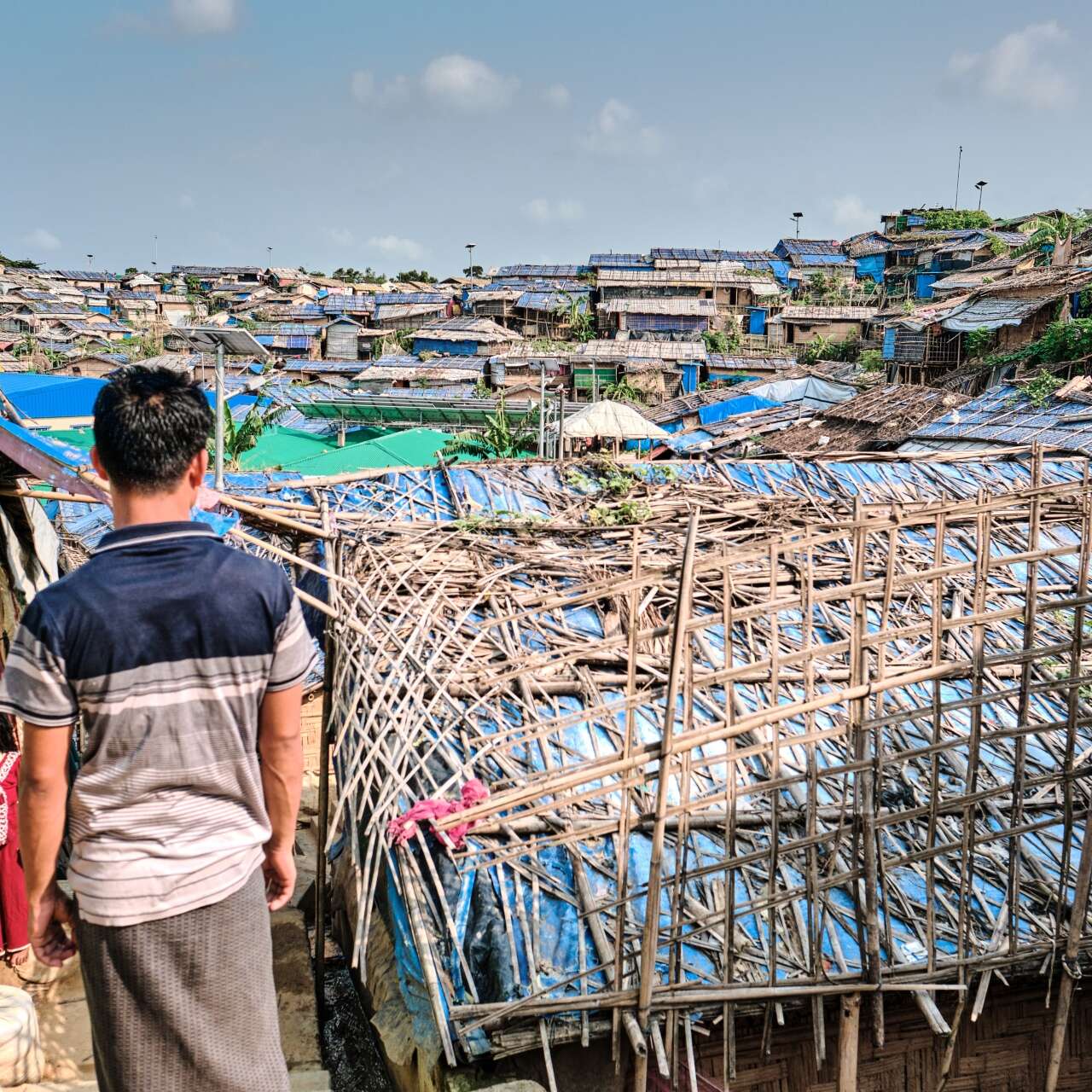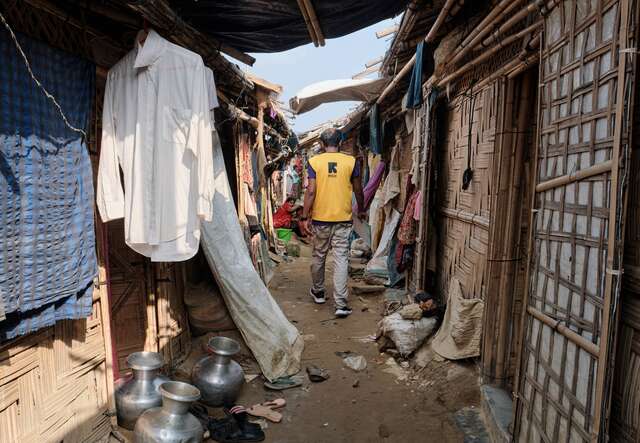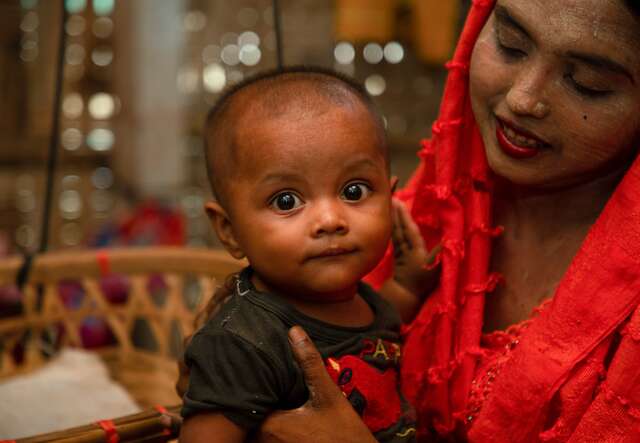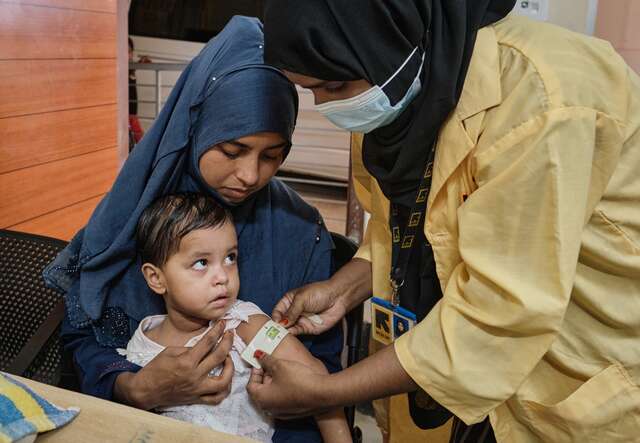
The Rohingya Crisis: What to know and how to help
The International Rescue Committee (IRC) is delivering critical aid to Rohingya communities in Bangladesh and Myanmar.

The International Rescue Committee (IRC) is delivering critical aid to Rohingya communities in Bangladesh and Myanmar.
In 2017, Myanmar’s military launched a campaign against the Rohingya people, a persecuted ethnic minority. More than 700,000 Rohingya were forced to flee to neighboring Bangladesh—many escaping with only the clothes on their backs.
Today, over one million Rohingya refugees reside in overcrowded refugee camps in Cox’s Bazar, Bangladesh. Without freedom to work or leave the camp, families rely almost entirely on humanitarian aid to survive.
The International Rescue Committee (IRC) is on the ground in Myanmar and Bangladesh, providing lifesaving support to Rohingya communities.
The Rohingya are a predominantly Muslim ethnic group in Southeast Asia who have lived in Myanmar for hundreds of years. Despite this long history, in 1982 the Myanmar (then Burma) government passed a law that effectively stripped Rohingya of their citizenship. To this day, the Rohingya continue to be deprived of citizenship, making them a largely stateless people.
This systemic discrimination has left the Rohingya vulnerable to violence, displacement and extreme poverty.
The Rohingya have endured decades of discrimination and attacks in Myanmar. In 2017, this persecution escalated into a full-blown humanitarian crisis.
After a Rohingya insurgent group attacked police outposts in Rakhine State, the Myanmar military launched a massive crackdown—not just on combatants, but on entire communities.
Thousands were killed and more than 700,000 Rohingya were forced to flee to neighboring Bangladesh. The U.N. special rapporteur on human rights in Myanmar reported that “soldiers murdered, raped, and tortured Rohingya civilians and burned Rohingya villages to the ground.”
Nearly a decade after widespread violence erupted, the Rohingya refugee crisis is far from over. An estimated 200,000 Rohingya could flee to Bangladesh by the end of 2025, further straining an already underfunded and overstretched humanitarian response. Today, more than 1.1 million Rohingya refugees live in overcrowded camps in Bangladesh, where they face heightened risks of malnutrition, disease and insecurity.
Despite continued persecution and threats of violence, some Rohingya remain in Myanmar.
Cox’s Bazar, Bangladesh, is home to the largest refugee camp in the world and hosts more than 1.1 million Rohingya refugees who have fled violence and persecution in Myanmar. That’s more than the entire population of Washington D.C., all of whom are forced to live in abysmal conditions.
Every day, Rohingya refugees in Cox’s Bazar face immense challenges, including:
Rohingya refugees do not have the legal right to freely leave the camp or work, forcing them to rely on humanitarian aid for survival. Children born in the camp have never known a life of peace, safety or opportunity.

Humanitarian aid is a lifeline to Rohingya refugees living in Cox’s Bazar. However, recent U.S. aid cuts are putting critical services in jeopardy. The abrupt closure of learning centers in Cox’s Bazar is particularly alarming and will leave nearly 500,000 children without access to education.
Abdul, who attends an IRC education program in Cox’s Bazar, worries for his future: “Without studying in learning centers or schools, I will not be able to become a doctor in the future. Please do everything that is required to make us educated so that we can change the fate of our society.”
For children in crisis, education reduces the risk of child labor, trafficking and early marriage—harms that disproportionately impact girls and undermine children’s protection and wellbeing. Between January and August 2025, there has been a 3% increase in reported cases of child marriage and a 7% increase in reports of child labor. We know that incidents of gender-based violence and child abuse are gravely under-reported in humanitarian settings, particularly in Cox’s Bazar.

The IRC is on the ground in Cox’s Bazar and Myanmar, working with our local partners to identify and meet the needs of Rohingya refugees in crisis. We stand firm in our commitment to help Rohingya communities survive, recover and rebuild their lives—but we need your support.
Since launching operations in Bangladesh in 2018, the IRC has reached more than 1.5 million people with critical services. Despite U.S. aid cuts, we continue to operate in Cox’s Bazar, providing health, protection, economic recovery and development, emergency response, and education services to Rohingya refugees and their host communities.
The IRC stands ready to scale up support as funding allows.

In Myanmar, the IRC delivers programming focused on improving health, protection, and water, sanitation and hygiene outcomes for people impacted by conflict and crisis.
With more than one million Rohingya refugees in urgent need of humanitarian aid—and with funding from donors like the U.S. in decline—your support is critical. Donations help maintain lifesaving services in the Cox’s Bazar refugee camp and reach crisis-affected communities still suffering in Myanmar.
Every gift makes a difference.
$93 can aid in the delivery of emergency food to one crisis-affected family.
$335 can train one person to be a health care volunteer in their community.
$1,500 can provide a community with a temporary classroom where children can continue to learn.
The International Rescue Committee has over 90 years of experience helping people affected by crisis in more than 40 countries to survive, recover and rebuild their lives. We also help refugees and displaced people resettle and integrate into new communities in the U.S. and across Europe.
Donate: We consistently earn top marks from charity watchdog groups for our efficient use of donor contributions and the effectiveness of our work.
Get connected: Follow the IRC on Instagram, LinkedIn, Facebook, Bluesky and X.
Stay informed: Learn more about the world’s most pressing crises and what the IRC is doing to help.